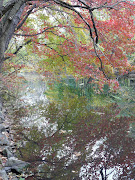“Calling on President John F. Kennedy to ‘End the arms race - not the human race,’ the women won wide attention from world leaders and the press. They built such a groundswell of support for nonproliferation that Kennedy credited them with helping to force the Cold War superpowers to eventually sign a partial nuclear test-ban treaty,” The Washington Post’s obituary for Wilson
High among the concerns that sparked the Women Strike for Peace demonstrations was cancer risk from the radioactive fallout from nuclear weapons tests in Nevada , the South Pacific and the Soviet Union . That’s where Louise Reiss came in. She directed a research project in St. Louis , Missouri
“The study ultimately found that children born in
“In June 1963, Dr. Reiss’s husband [Eric] presented the findings in testimony before a Senate committee in support of a treaty. Two months later, the Partial Test Ban Treaty between the
Among the lessons conveyed by the historic nature of the work that Reiss and Wilson did is the vital importance of independent research into the effects of government programs. “Dr. Reiss was proud that the project achieved its aims through science rather than politics,” noted The New York Times. “‘I continue to be moved by the knowledge that a group of organized people can effectively pressure government if they come up with data instead of rhetoric,’ she wrote in a letter to a colleague in the study in 1996.”
Another lesson is the importance of widespread, creative civic actions that focus public concerns. “The idea to form Women Strike for Peace, Ms. Wilson said, came to her in 1961 while she was sitting with friends in the backyard of her house in the
“Ms. Wilson, an artist and illustrator of children’s books, had never been an activist but had long been worried about nuclear fallout. Women, she decided, should strike — take time from their jobs and homemaking for the cause of peace. ’I decided that there are some things the individual citizen can do,’ she told The New York Times in 1962. ‘At least we can make some noise and see. If we are going to have to go under, I don’t want to have to go under without a shout.’”
Dagmar Wilson died Jan. 6 at age 94. Louise Reiss died Jan. 1 at 90. They bought us all some more time to enjoy longer lives.
For more information:








No comments:
Post a Comment